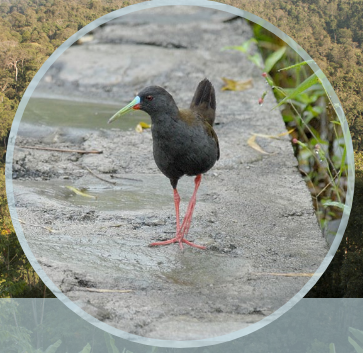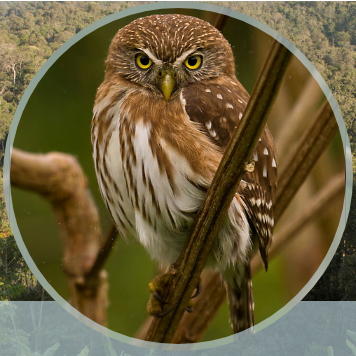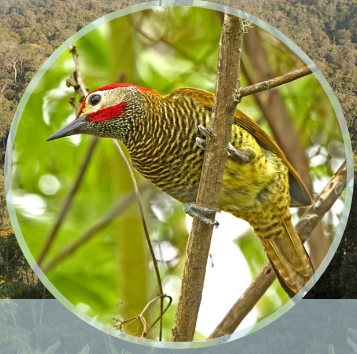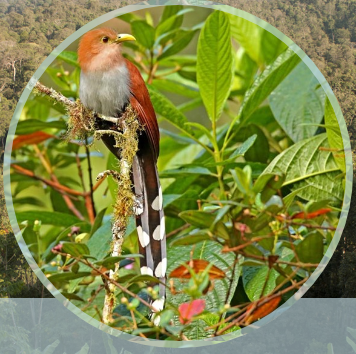The Vilcabamba area itself is home to hundreds of species of birds. Only in the RumiWilco reserve more than 120 species are reported; This number of Vilcabamba birds undoubtedly grows due to the proximity to the Podocarpus National Park, where bird records exceed 600 species, that is, more than a third of the total number of birds reported in all of Ecuador.
Discover some of the birds of Vilcabamba
1st part
There are only a few minutes left in silence in the surroundings of the central part of Vilcabamba or even in it so that with a little attention you can begin to enjoy the sound of dozens of different species of birds that are common to hear in the various places of the so-called Sacred Valley. in the province of Loja in southern Ecuador. Learn to identify them.
Plumbeous Rail
(Pardirallus sanguinolentus) 1.

Habitat
Wet areas such as lakes, swamps, dams and wetlands
State of conservation
minor concern
Other data
It is medium in size, with black plumage all over its body. Its beak can be of different colors on its legs it has sharp claws with which it looks for food on the shores of lakes, rivers and streams.
Peruvian Mochuelo / Peruvian – pygmy Owl
(Glaucidium peruanum) 2.

Habitat
Forests and thickets (deciduous, dry and humid).
State of conservation
minor concern
Other data
They are especially nocturnal in habit. They feed on invertebrates and small vertebrates
Loja Hummingbird / Loja Hummingbird
(Amazilia alticola) 3.

Habitat
Cloud forests and open scrub.
State of conservation
minor concern
Other data
They are territorial and very competitive. They feed on the nectar of flowers which they in turn pollinate.
Golden Olivi Woodpecker / Golden olive Woodpecker
(Colaptes rubiginosus) 4.

Habitat
Mountainous forests (where it usually feeds) although it is mostly seen in open thickets.
State of conservation
minor concern
Other data
It feeds on ants, termites, beetles and other insects, sometimes taking fruits and berries.
Elegant Crescent Chest / Elegant Crescent Chest
(Melanopareia elegans) 5 and 6.

Habitat
Dense arid thickets and dry forests, up to 2,300 meters above sea level
State of conservation
minor concern
Other data
It can measure about 15 cm. It is distributed along the coasts and dry forest regions of Ecuador and northern Peru.
Eared Dove / Eared Dove
(Zenaida auriculata) 7.

Habitat
Area of forests, thickets and Andean moors.
State of conservation
minor concern
Other data
They make a very peculiar song and very different from other birds. The females sing just before feeding their young and the male's song is louder and more in tune.
Apical Dove / White-tipped Dove
(Leptotila verreauxi) 8.

Habitat
Area of forests, thickets and Andean moors.
State of conservation
minor concern
Other data
They make a very peculiar song and very different from other birds. The females sing just before feeding their young and the male's song is louder and more in tune.
Squirrel Cuckoo / Squirrel Cuckoo
(Piaya Cayana) 9.

Habitat
They live inside the Andean forests.
State of conservation
minor concern
Other data
It feeds on insects, such as cicadas or leafhoppers, wasps and caterpillars, spiders, lizards, and sometimes fruit. Sometimes they forage together with other species of birds.
Calandria Dorso Amarillo / Yellow backed oriole
(Icterus mesomelas) 10.

Habitat
In dry forests and thickets. It is reported in the area of the RumiWilco Reserve.
State of conservation
minor concern
Other data
It is one of the most recognized birds of Vilcabamba. Even in the community there is a school with his name.
When they are young, this species can present an olive green plumage instead of yellow.
It is important to remember that as one of the actions to be able to sustain the ecosystems that include these and dozens of other species of birds, it is important to protect water sources. One of the cases that maintains citizen attention, for example, is that of the Iron Urco protection against mining threats at water source points.
REFERENCES
- Freile, JF, Poveda, C. 2019. Pardirallus sanguinolentus In: Freile, JF, Poveda, C. 2019. Birds of Ecuador. Version 2019.0. Zoology Museum, Pontifical Catholic University of Ecuador. https://bioweb.bio/faunaweb/avesweb/FichaEspecie/Pardirallus%20sanguinolentus, access Wednesday, June 16, 2021.
- Freile, JF, Poveda, C. 2019. Glaucidium peruanum In: Freile, JF, Poveda, C. 2019. Birds of Ecuador. Version 2019.0. Zoology Museum, Pontifical Catholic University of Ecuador. https://bioweb.bio/faunaweb/avesweb/FichaEspecie/Glaucidium%20peruanum, access Wednesday, June 16, 2021.
- Image taken from https://www.pinterest.com/pin/287174913711991481/
- Olmedo, I 2019. Colaptes rubiginosus In: Freile, JF, Poveda, C. 2019. Birds of Ecuador. Version 2019.0. Zoology Museum, Pontifical Catholic University of Ecuador. https://bioweb.bio/faunaweb/avesweb/FichaEspecie/Colaptes%20rubiginosus, access Wednesday, June 16, 2021.
- Olmedo, I 2019. Melanopareia elegans In: Freile, JF, Poveda, C. 2019. Birds of Ecuador. Version 2019.0. Zoology Museum, Pontifical Catholic University of Ecuador. https://bioweb.bio/faunaweb/avesweb/FichaEspecie/Melanopareia%20elegans, access Wednesday, June 16, 2021.
- Image taken from https://es.wikipedia.org/wiki/Melanopareia_elegans#/media/Archivo:Elegant_Crescent-chest_-_South_Ecuador_S4E9216_(16644372590).jpg
- Freile, JF, Poveda, C. 2019. Zenaida auriculata In: Freile, JF, Poveda, C. 2019. Birds of Ecuador. Version 2019.0. Zoology Museum, Pontifical Catholic University of Ecuador. https://bioweb.bio/faunaweb/avesweb/FichaEspecie/Zenaida%20auriculata, access Wednesday, June 16, 2021.
- Freile, JF, Poveda, C. 2019. Leptotila verreauxi In: Freile, JF, Poveda, C. 2019. Birds of Ecuador. Version 2019.0. Zoology Museum, Pontifical Catholic University of Ecuador. https://bioweb.bio/faunaweb/avesweb/FichaEspecie/Leptotila%20verreauxi, access Wednesday, June 16, 2021.
- Freile, JF, Poveda, C. 2019. Piaya Cayana In: Freile, JF, Poveda, C. 2019. Birds of Ecuador. Version 2019.0. Zoology Museum, Pontifical Catholic University of Ecuador. https://bioweb.bio/faunaweb/avesweb/FichaEspecie/Piaya%20cayana, access Wednesday, June 16, 2021.
- Freile, JF, Poveda, C. 2019. Icterus mesomelas In: Freile, JF, Poveda, C. 2019. Birds of Ecuador. Version 2019.0. Zoology Museum, Pontifical Catholic University of Ecuador. https://bioweb.bio/faunaweb/avesweb/FichaEspecie/Icterus%20mesomelas, access Wednesday, June 16, 2021.
![]()

